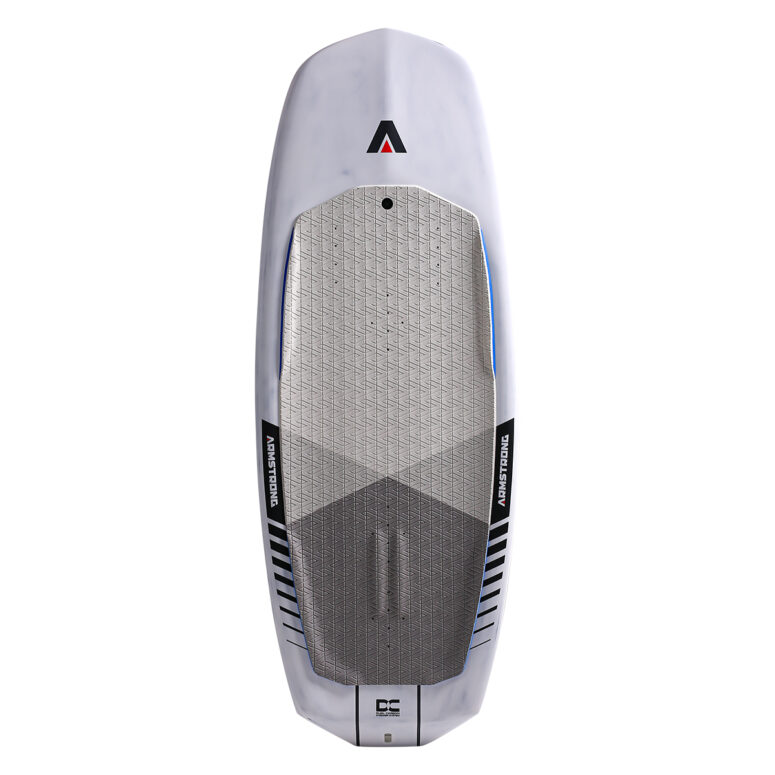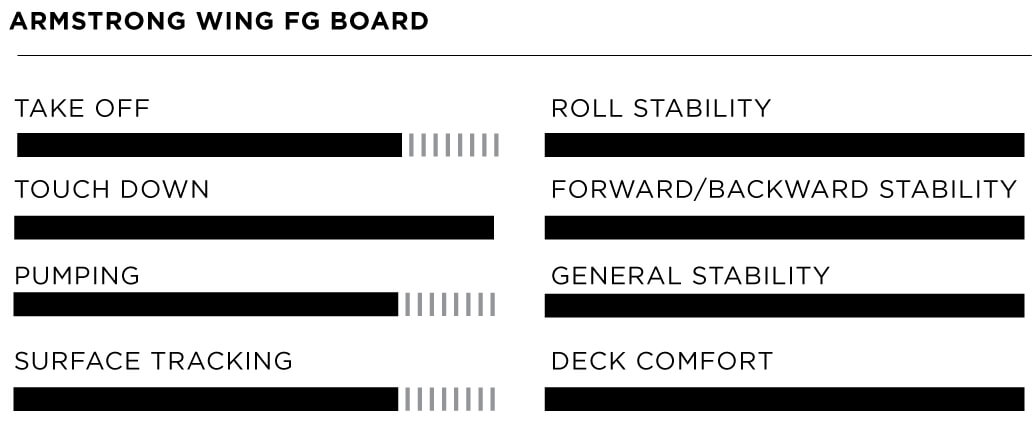

When you purchase gear through links on our site, we may earn a small commission. Here’s why you can trust our tests and our affiliate partner.

As wingfoiling’s exponential progression marches forward, so does the equipment, and the new FG is a prime example of this. After a very successful first board, catering well for early stage riders in the larger volumes, which at time of release, let’s face it, was where 95% of people were realistically at on the learning curve. The next gen board retains much of the friendly characteristics of the first board and chisels itself into something a little narrower and performance focused. A huge range of ten sizes are available, ranging in volumes from 34l through to 135l catering for literally every weight, skill level and riding style conceivable.
As with all Armstrong boards, the fixtures and fittings are exemplary, and it comes with a beautifully tailored bag as standard with a ‘foil on’ Velcro slot and decent padding. The proprietary deck pad has some hidden detail, with slanted edging in its extremities. This allows you to feel out the sweet spot if you’ve put in a sloppy foot change and ended up with a foot in the wrong place, or notifies you if you’ve crept your foot to the edge of the board. There are also two gentle humps over the middle of the foil box which again allows foot adjustment to find the perfect spot. The standing area and deck pad coverage is quite large making for a forgiving expanse to shuffle around on which is important to get your weight distribution right, and makes for comfortable riding in the larger sizes where you may need to straddle the stringer in an offset stance.
Shape-wise some evolution has occurred from the previous board, but it retains much of the easy-to-use nature. Although the board is narrower per volume, the volume distribution is overall more centralized and even, particularly in the nose, which retains a lot of the stability of the previous model. The concaves in the hull, whilst still definitely present, look to have been toned down a little, and when combined with the narrower shape, do well at promoting a much earlier release and takeoff, with less suck to the water in the front of the board in practice.
The FG concept, which carries through the whole Armstrong range, essentially means an extended foil box which pushes forward into the center of the board, allowing for huge adaptability and adjustment on your setup. With the new HA foil range we found the mast best planted exactly in the middle, with no shims required to feel comfortable on the 80l board at 90kg rider weight. Construction features the double I-beam carbon stingers which in turn fuse into the proprietary carbon track box giving an ultra-stiff connection to the foil.
In essence, it's a full 1980s LA plastic surgery for the new Wing FG, with a severe nose job and a tummy tuck. Those who loved the previous board certainly won’t be disappointed as it retains the stable feeling, with the recessed deck still giving that rubber-ring feeling placing volume all around the standing area. What’s massively enhanced with the new nose and narrower outline is the early planing ability and ease of release. This is a good move from Armstrong as it’ll get riders on smaller foils earlier as they progress. Once up and flying it’s evident there’s a lot less drag than previously as well, with an overall reduced windage feeling more nimble through the corners, and in overpowered situations the mid-sized boards feel less compromised, cutting through the air better. Requiring less power to take off will mean you can take a smaller wing, and be less power hungry in a wave situation.
Armstrong have done a great job of evolving the shape on the Wing FG, and making nothing but improvements, augmenting the board to a broader range of usage and making that crucial takeoff all the more easy to achieve.
